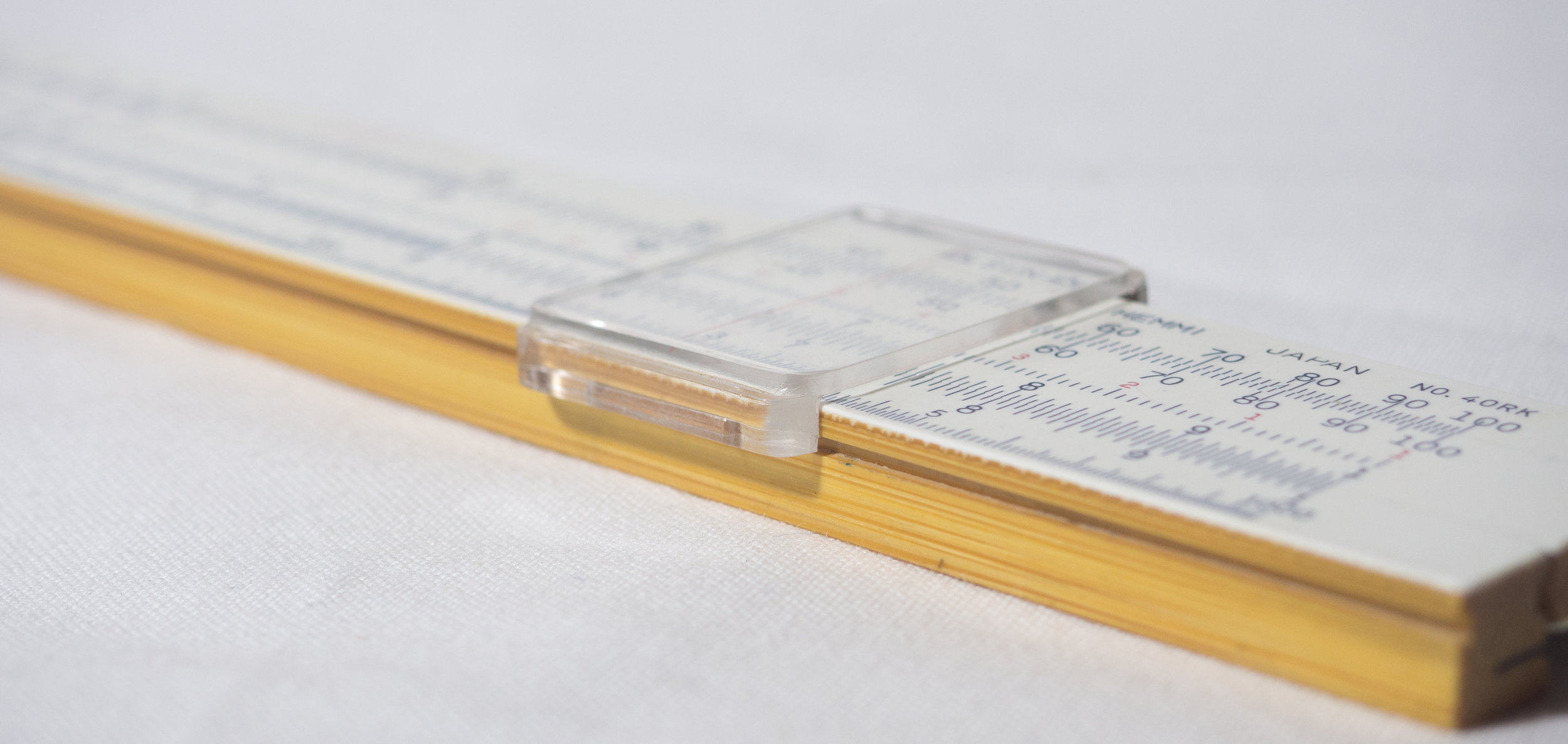
The Art Of Mathematics
Clearly, mathematics is a science. However, that is only for those who have the tools, time, and Actual Requirement to reach a definitive answer, e.g., landing a rover on the moon.
For those of us who began our engineering studies before the 70’s, the practicality of the slide rule is well appreciated.
This intriguing device of sliding scales, that miraculously performs multiplication and division via the addition and subtraction of non-proportional linear distances (log based), minimized the terror of dealing with an endless flow of variables encompassed in complex engineering equations. That was the heyday for this analogmathematical device before digitalcalculators were being infused into the engineering ranks. Accordingly, it was the pinnacle for the art of approximation, the art of defining squishy limits which was all that was need for many calculations. Using the slide rule required thinking in terms of powers of 10 as well as understanding that there was a clear rationale to acceptable precisionin many situations, what was referred to as “significant digits”. For example, did the resulting answer of 8.something shown on the slide rule’s “D” scale after multiplying and dividing a series of 27 numbers actually mean 8.2 ? or .82? or perhaps was it .0082 ? or maybe 8200 something? Back then, “being close” was good enough for many situations, in fact often expected. Indeed, test scores in college engineering classes prior to 1970 were partially determined by the proper use of the slide rule. That is, if the student provided an answer of 8.24, then it was marked as incorrect because it extended beyond significant digits provided by the physical display of the slide rule.
With the introduction of the personal calculator arrived the immediate demand for absolute precision. This was not a level of precision that one had to work for with the slide rule. Rather, this was precision to the extent of the green-lighted displays on the calculator that were instantly provided. On the slide rule, 8/3 was 2.7 whereas on the digital calculator the answer was 2.666666666. Additionally, if one required the square root, or even a discounted cash flow, one needed only to push the appropriate programmed function key once the data had been entered. The individual was given the answer, without thought, without question and, unfortunately, without the opportunity to truly understand the underlying mathematics.
For realistic, practical engineering, the slide rule is a tool that requires the user to estimate as well perform the continuing calculations in her/his head so as to properly place the decimal for the final solution. Without programmed function keys, the user must actually understand the variables and coefficients of the equation, and maintain the placement of the decimal (power of 10) of the final answer. This is THE ART OF MATHEMATICSwhich is an amazing discipline that is lost on engineers after the 70’s.
As a Technologistfor 40+ year (meaning that I make the business case for what I design), I having successfully designed a number of unprecedented systems to advance the safety and productivity of railroad operations via advancing technologies, I have found that the new generation of ‘digitally-trained’ technicians/engineersare often failing in their ability to accept and introduce practical solutions given their inability to work with practical solutions. This is due to the fatuous precision perspective they demand in their efforts that are often not affordable, if even achievable. Without going into the detail, what the railroad engineers did to deploy Positive Train Control (PTC), as I originally designed, was over the top expensive to deploy given the unjustified focus on precision and appalling technical/functional requirements. If interested for more detail on this point, you can find postings on my blog: strategicrailroading.com
I have purchased slide rules for each of my 4 grandchildren, as well as simplistic user manuals, with the hope that they will at least understand this mathematical-expanding discipline of approximation.
JUST THINKING!